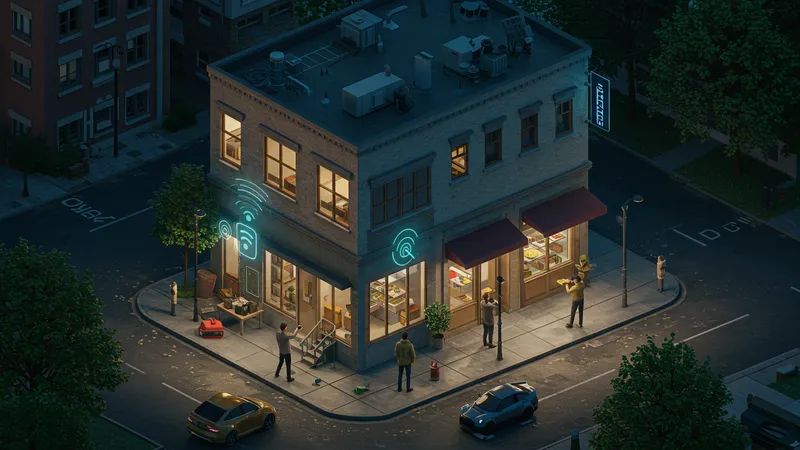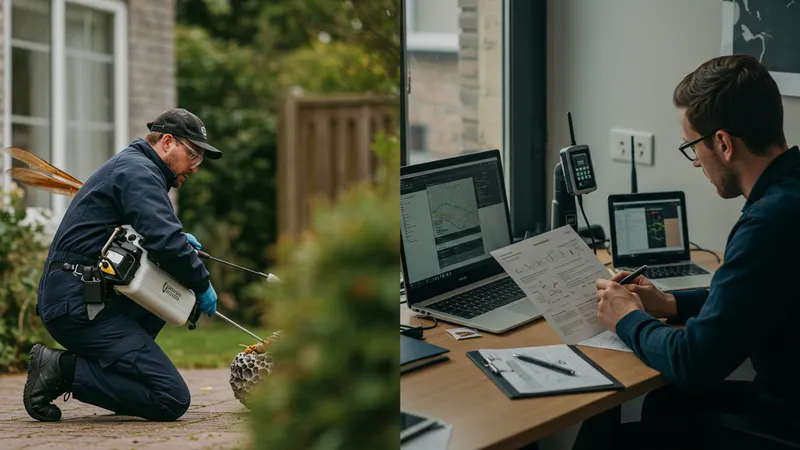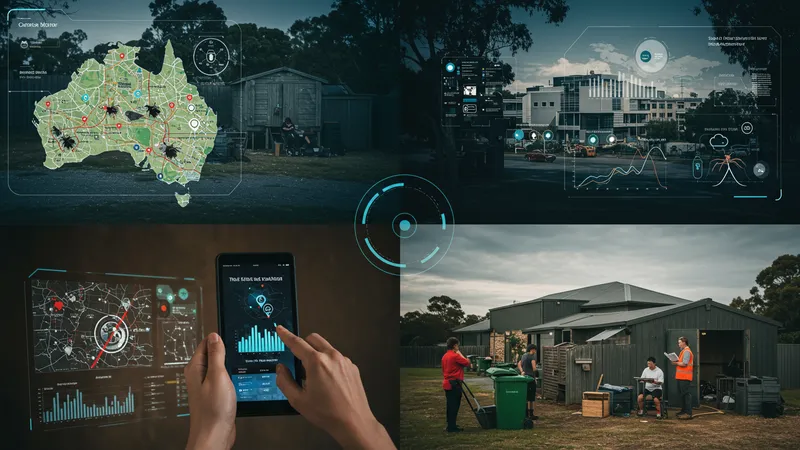

Modern pest management is far more than a quick spray or a simple trap. It’s a coordinated approach to defending living and work spaces from a wide range of potentially troublesome and costly intruders—think termites eroding timber, cockroaches contaminating kitchens, or rats damaging wiring unseen behind walls. Whether it’s a cozy suburban home or a bustling city café, unmanaged pests can disrupt daily life, damage property, and undermine reputations faster than many expect.
Both residential and commercial spaces in Australia face unique pressures. The country’s warm climate acts as a magnet for many pest species, which means homes and businesses must constantly battle seasonal surges of unwanted guests. Strategies for control range from proactive prevention and exclusion measures to precise application of registered treatments, tailored to the environment and the specific invader. Beyond physical protection, there’s a broader sense of safety and assurance that comes from proper pest control—peace of mind that your sanctuary remains truly yours.

One of the biggest advantages for property owners in Australia is the availability of versatile pest control providers, each with their own specialities. Flick Anticimex, for example, combines traditional treatments with smart technology, enabling real-time digital monitoring of pest activity in sensitive environments such as restaurants and hospitals. J.C. Ehrlich’s approach focuses on long-term integrated strategies, reducing dependence on chemicals and offering detailed reporting—ideal for complying with health regulations in offices and food facilities. Jim’s Pest Control brings professional services directly to homes, providing accessible, flexible solutions for families worried about insects or rodents.
Across Australia, investments in pest control are not just about avoiding irritating insects. Termites alone are estimated to cause over $1.5 billion in damages to Australian homes annually. Effective pest management, as practiced by providers like those listed, is a crucial insurance against escalating repair bills, business closures, and even legal issues stemming from non-compliance with health codes. Homeowners and business operators increasingly seek full-year management plans over one-off visits, reflecting a shift toward prevention and monitoring as central pillars of effective defence.
Pest control is also an evolving science. Modern Australian companies often blend traditional exclusion techniques—like sealing cracks and removing food sources—with cutting-edge biological solutions. For example, integrated pest management (IPM) strategies may use pheromone traps to monitor and disrupt breeding cycles, reducing populations without relying exclusively on chemicals. This approach benefits families, businesses, and the environment alike, and matches growing public demand for greener living and working spaces.
Another overlooked benefit is the public health impact. In urban Australia, rodents and insects are not just nuisances; they can also spread disease and trigger allergies, particularly in crowded commercial precincts or shared housing. Timely professional intervention helps minimise these risks, supporting both public well-being and business continuity. As evolving regulations tighten the responsibilities for rental properties and food-service establishments, the role of reliable pest control providers becomes even more central to daily life.
In summary, safeguarding homes and businesses in Australia from persistent pests demands informed choices and a commitment to prevention. Flick Anticimex, J.C. Ehrlich, and Jim’s Pest Control exemplify the range of services and innovations now available. But what separates good protection from great? The deeper details reveal even more valuable insights ahead...
Australian pest control companies recognise the need for thorough prevention strategies that start well before any sign of an infestation. Property owners are encouraged to implement exclusion techniques such as sealing entry points, managing waste, and storing food in airtight containers. These basic steps can dramatically reduce the attractiveness of a building to rodents, ants, and cockroaches, which thrive where shelter and food are easily accessible. Advanced prevention plans often include environmental modifications around the property, like eliminating standing water to deter mosquitoes or clearing away timber debris that attracts termites.

Both homeowners and business operators can benefit from digital monitoring offered by providers such as Flick Anticimex. Their sensor systems track activity over time, sending alerts when unusual movements are detected. This technology is especially useful in large commercial premises, where manual inspections may miss early warning signs. By integrating such systems into routine maintenance, businesses can minimise costly disruptions and maintain compliance with health and safety standards required by councils and industry regulators.
Education is another key component: pest control professionals now regularly offer training for staff in hospitality and rental property management. Simple habits, like cleaning up crumbs or reporting leaks, form the backbone of any successful long-term strategy. The emphasis on education reflects a shift from reactive responses to a culture of prevention, reducing the likelihood of infestations becoming established and uncontrollable.
Routine professional inspection plays a vital role in ensuring that prevention strategies keep pace with evolving threats. For example, termite pressure in Queensland suburbs can differ from rodent issues in Sydney’s city centre. Providers like J.C. Ehrlich and Jim’s Pest Control schedule regular assessments, adapting their recommendations to suit local conditions and seasonal trends. This tailored support ensures that every site, from café to childcare centre, receives the protection it needs as Australia’s pest landscape changes year to year.
Australian pest control service models can generally be divided into two main categories: one-off treatments and ongoing maintenance plans. Homeowners may opt for a single targeted intervention when faced with a specific outbreak, such as a wasp nest near the back door or sudden signs of cockroaches in a kitchen. This approach is usually quicker and less costly upfront, with prices from companies like Jim’s Pest Control starting around $125 for basic services. However, one-off treatments rarely address underlying causes and may leave properties exposed to recurring issues.

Ongoing maintenance plans, on the other hand, focus on prevention and continuous monitoring. Providers like Flick Anticimex and J.C. Ehrlich offer annual or multi-year contracts that bundle regular inspections, digital monitoring, and tailored treatments as needed. These plans—the cost often starting at $400 annually for small businesses—provide peace of mind for property managers and business owners, allowing them to focus on core activities rather than pest worries. Comprehensive documentation is another advantage, especially for commercial clients needing to demonstrate compliance with health authorities.
Comparing these service models, it’s evident that long-term plans offer distinct value for properties in high-risk pest locations or industries with strict regulations. They often result in fewer major infestations and lower repair costs over time. The use of integrated pest management techniques within these plans can further improve safety by reducing chemical usage and targeting control more precisely. This means property owners and tenants benefit from a safer and healthier living or working environment.
Choosing the right service model depends on property type, local pest pressures, and regulatory requirements. For example, many commercial kitchens in Melbourne require monthly inspections by law; in contrast, suburban homes may schedule quarterly checks. Providers like those listed adapt their offerings to these needs, ensuring businesses and households across Australia can find an approach that suits both their budget and their long-term security.
Technology has reshaped how pest control is delivered across Australia, introducing significant improvements in detection, monitoring, and treatment precision. Companies such as Flick Anticimex have pioneered the use of digital pest traps and real-time reporting dashboards, which allow users to track rodent or insect movements remotely. These “smart” systems generate alerts, reducing reliance on periodic manual inspections and enabling faster responses to newly detected threats. For high-value commercial properties or sensitive environments like hospitals, this can mean the difference between minor intervention and full-scale infestation.

J.C. Ehrlich specialises in integrated pest management platforms that consolidate data from multiple sensors and inspections. Their systems help clients identify trends in pest activity, adjust cleaning schedules, and even forecast seasonal risks. By leveraging these insights, facility managers can make informed decisions about targeted interventions, ultimately saving time and resources. For residential applications, providers like Jim’s Pest Control now offer homeowners app-based reporting, so they can track service histories and communicate easily with their local technicians.
Advances in environmentally friendly treatments have also emerged, addressing growing demand for sustainability. Biological control agents, baits using insect growth regulators, and reduced-impact formulations are increasingly available in Australia. These innovations align with household and business priorities for safer, greener solutions, particularly in sectors like childcare, aged care, and hospitality, where vulnerable populations require extra consideration.
Modern technologies have thus transformed the expectations and results achievable in Australian pest control. The combination of digital intelligence and eco-conscious products delivers robust, reliable protection against pests while meeting the evolving regulatory and social standards of today. As we look ahead, even more innovative possibilities are on the horizon—many of which will redefine how protection is managed in both homes and workplaces.
The future of pest management in Australia is set to evolve through ongoing integration of smart technology and data analytics. As providers like Flick Anticimex and J.C. Ehrlich refine their remote monitoring capabilities, property managers will be able to predict and prevent outbreaks with even greater accuracy. Data-driven insights about local pest populations, weather impacts, and building vulnerabilities will support faster, more targeted interventions, helping Australians safeguard their properties throughout changing seasons.

Best practices increasingly combine technical expertise with community engagement. For residential areas, this includes working with neighbours to address shared risks like rats using garden sheds or communal waste bins. In business settings, compliance with health and safety standards remains paramount, especially as food and hospitality venues face heightened regulatory scrutiny. Providers ensure their teams are well-trained, licensed, and regularly updated with the latest safe handling protocols for all chemical and non-chemical treatments used.
Regular reviews of control strategies are essential to ensure ongoing effectiveness. Pest behaviour can shift due to factors such as climate change, urban development, and transport networks. By partnering with forward-thinking providers, property owners benefit from fresh risk assessments tailored to their local environment—whether it’s a humidity-prone Brisbane home or a heritage-listed Sydney office. These consultations help identify new vulnerabilities early, preventing infestations from taking hold.
Ultimately, the combination of technology, experience, and a proactive mindset has made pest management in Australia more effective and accessible than ever. By following industry best practices, leveraging reputable service providers, and staying informed about the latest advances, homeowners and businesses can look forward to safer, healthier, and more resilient living and working spaces now and into the future.